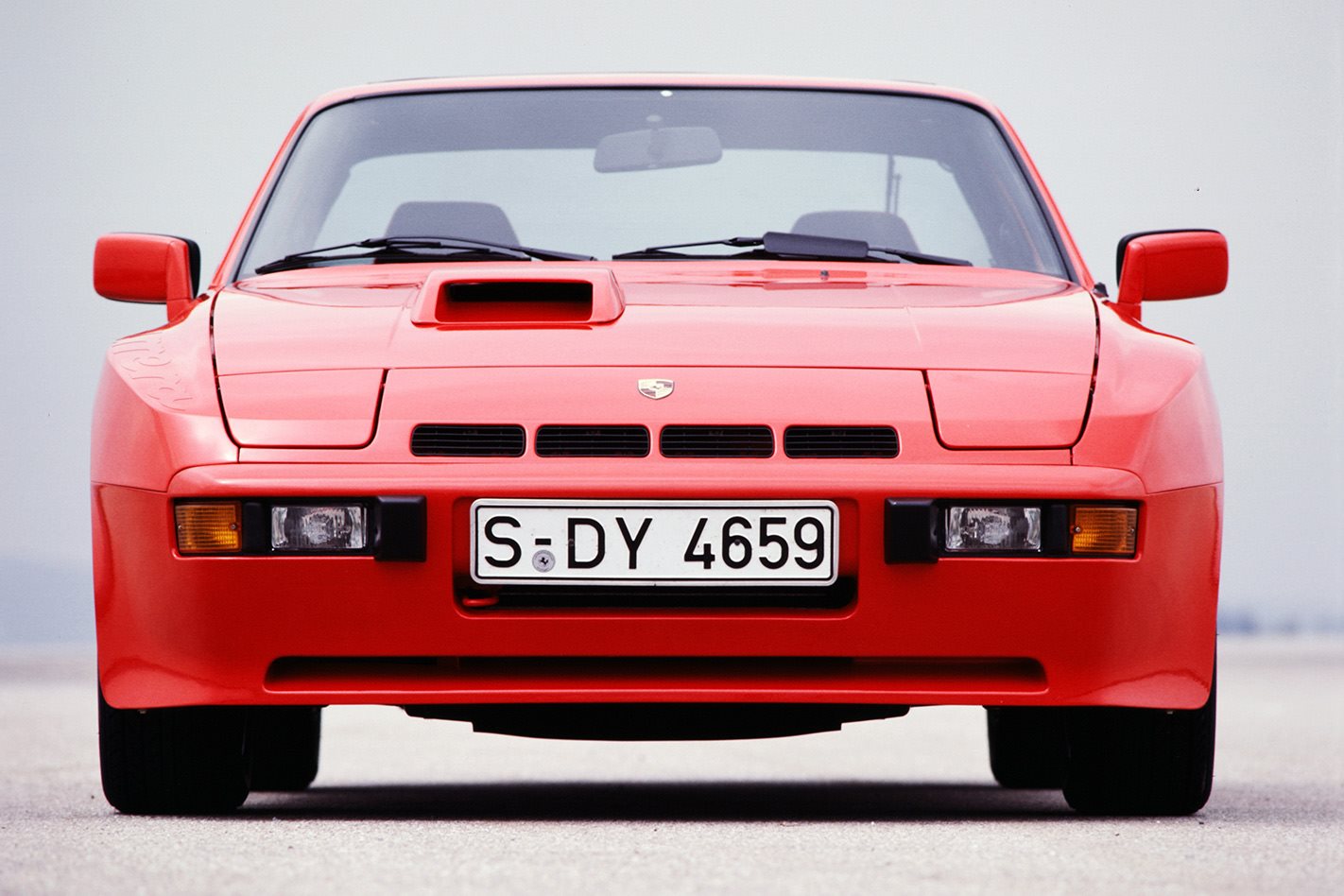There’s a received wisdom that has long enveloped the Porsche 924. It was the rejected Audi project with a van engine, championed by Ernst Fuhrmann, the misguided Porsche CEO who tried to obliterate the 911. The 924 was the unloved Porsche; the vehicle that traded on, rather than embellished the badge and which put the engine at the wrong end of the car, cooled by the wrong medium. The truth? Well, there’s a lot wrong with that lazy summation.
In fact, Professor Fuhrmann was a pragmatist, and a very clever one at that. His 928 project was a canny hedge. A front-engined, rear-drive V8 GT car was a form factor that its largest market, the USA, would never be able to outlaw. Likewise, he was able to tease the 911 into a new and more profitable sector with the 930 Turbo flagship. And Fuhrmann knew better than most that the histories, as well as the familial DNA, of Volkswagen and Porsche were inextricably linked.

The 356 and the 914 models both owed much to Volkswagen, so the 924 was, to a certain extent, business as usual. A Porsche design, developed by Porsche for Volkswagen and then bought back at huge cost when Wolfsburg decided on a front-wheel drive future for its sports coupe, it was critical in shaping Porsche’s fortunes in the 1980s and helped sculpt a narrative pivotal in Porsche’s history. The 924 was an admission that the 911 alone could not float the boat. It needed some heavy lifting from more popular models. Where the 924 went, the 944, Cayenne and Macan followed.
It took Porsche 15 years, between 1973 and 1988, to shift 198,414 units of the 911. In just five years to 1981, the 924 sold 100,000 units. Its successor, the 944, added another 135,040 through to the end of 1988. Without the four-cylinder transaxle cars to give buyers a first step into Porsche ownership, that figure for the 911 would have been considerably lower, Porsche’s data showing that better than 35 percent of 924/944 buyers subsequently graduated to the rear-engined icon. Those who view the 924 as a failure miss the point. Without it there would be no 911.

Not everyone at Weissach bought into this philosophy. Porsche’s ex-head of R&D Helmuth Bott always saw the wisdom in retaining focus on the 911, ultimately developing the 959, in his eyes a ‘super 911’. Upon viewing the 924 GTR racing car he was reported to have sniffed, “If I wanted to make a Black Forest gateau, I wouldn’t start with a bucket of sand and a bucket of water.”
The standard 2.0-litre 924 was indeed spawned from proletarian ingredients and, with its drum rear brakes and emissions-crippled power output, was an expensive means to a limited end. Porsche began to rectify this in 1979 with a 125kW turbocharged variant that was faster, stronger, and more focused. From these roots came the unveiling at the 1979 Frankfurt motor show of the 924 Carrera and the 1980 production debut of the car we have here, the 924 Carrera GT, a homologation special that remains one of Porsche’s most intriguing cars of the ’80s.

By today’s standards, its 154kW doesn’t sound a whole hill of beans, but perspective is key. The Carrera GT’s 2.0-litre powerplant, boosted by a KKK 931 turbocharger, comfortably eclipsed the 140kW power figure of the contemporary 911 SC, with only the 220kW 911 Turbo 3.3 and the newly announced 221kW 928S sitting atop it in Porsche’s hierarchy. Its power-to-weight figure even bettered the later 944 Turbo; a serious car by any measure. What’s more, a combination of thermal efficiency, aerodynamics and gearing made it the most economical 924 of the lot.
Aside from the lighter Kolbenschmidt pistons and the Langerer and Reich intercooler, the engine was broadly similar to that in the 924 Turbo. The 924 Carrera GT also saw a custom Siemens digital ignition-timing computer, a 911 clutch plate, beefier 911 synchromesh rings, Fuchs wheels from the 911 SC (front)and 911 Turbo (rear), while the brakes and the Koni front dampers are shared with the later 944. Porsche gave the left-hand-drive Carrera GT model designation 937 (the shorthand that is most frequently used for the car) with right-hand-drive cars dubbed 938, contrasting with the 924 Turbo’s model designation 931.
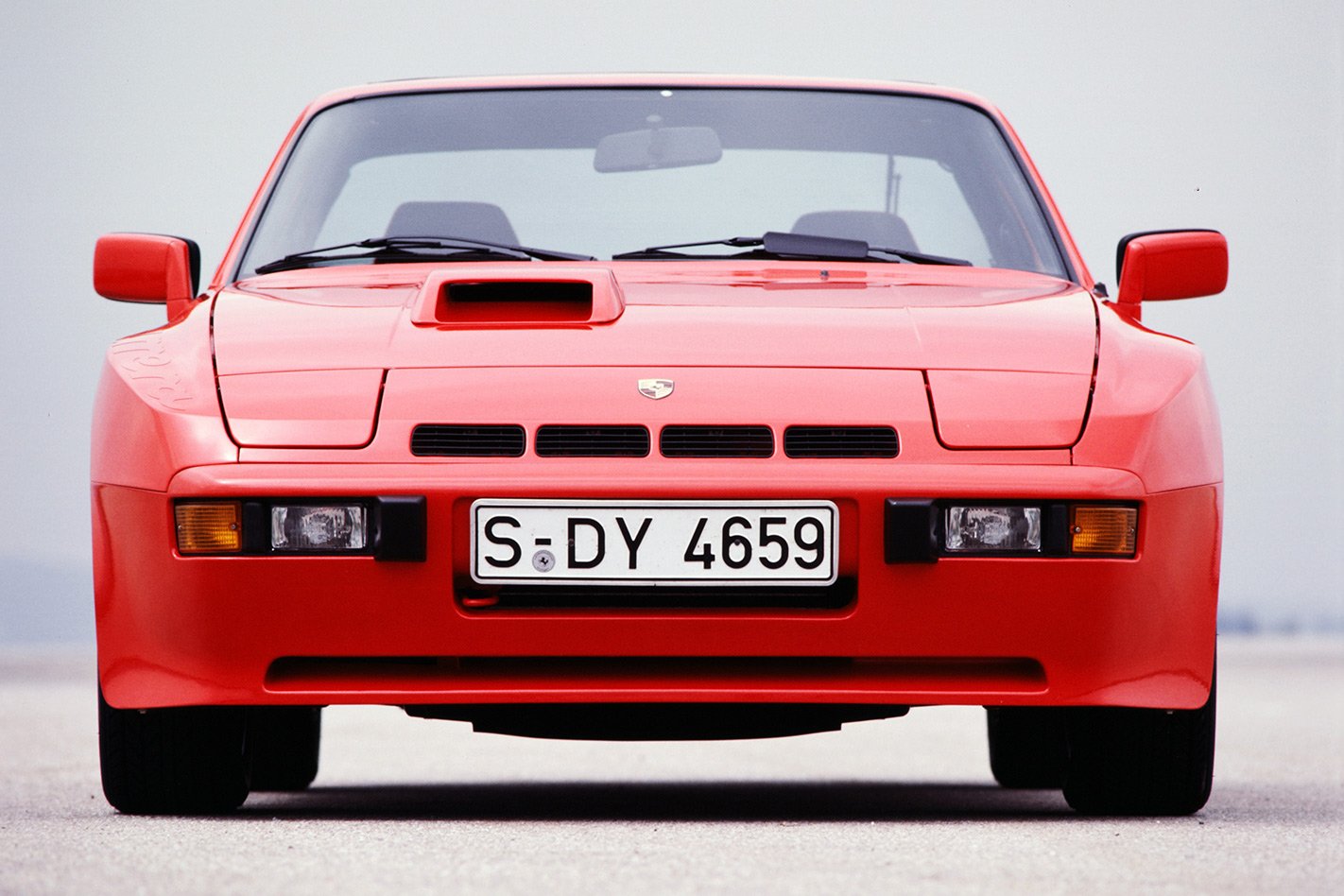
The wider polyurethane guards and aggressive hood scoop are the most obvious visual differentiators to the 924 Turbo, but the Carrera GT also rides lower. The front tyres are 215/60VR15 as standard, but most customers took the option of a 16-inch front wheel with 205/55VR16 boots. The rears, using spacers to help avoid the 924’s undershot track width, measure 225/50VR16. The dampers were either Porsche’s own, Koni or Bilstein B6 Sport units, the latter the most preferable replacement. Another desirable option was the limited-slip differential which, when paired with the bulletproof Getrag G31.013 dog-leg five-speed manual ’box, made for a seriously burly driveline.
The transaxle set-up introduced on the 924 wasn’t anything particularly novel. Look at grand prix cars of the 1930s and you’ll see a similar architecture of engine at the front and a solid tube running back to a transmission and differential at the back. Alfa Romeo featured such a set-up on its Alfetta, so Porsche examined the Milanese engineering but concluded that the floppy shift linkage and propshaft inertia which put stress on the synchromesh was a design compromise too far. Porsche kept the clutch attached to the engine’s flywheel, with power being sent rearwards by a slim 20mm steel bar, supported in an 85mm tube by four annular bearing races. This rigid structure resulted in zero driveline shunt and a near-optimal 49:51 weight distribution for the Carrera GT.
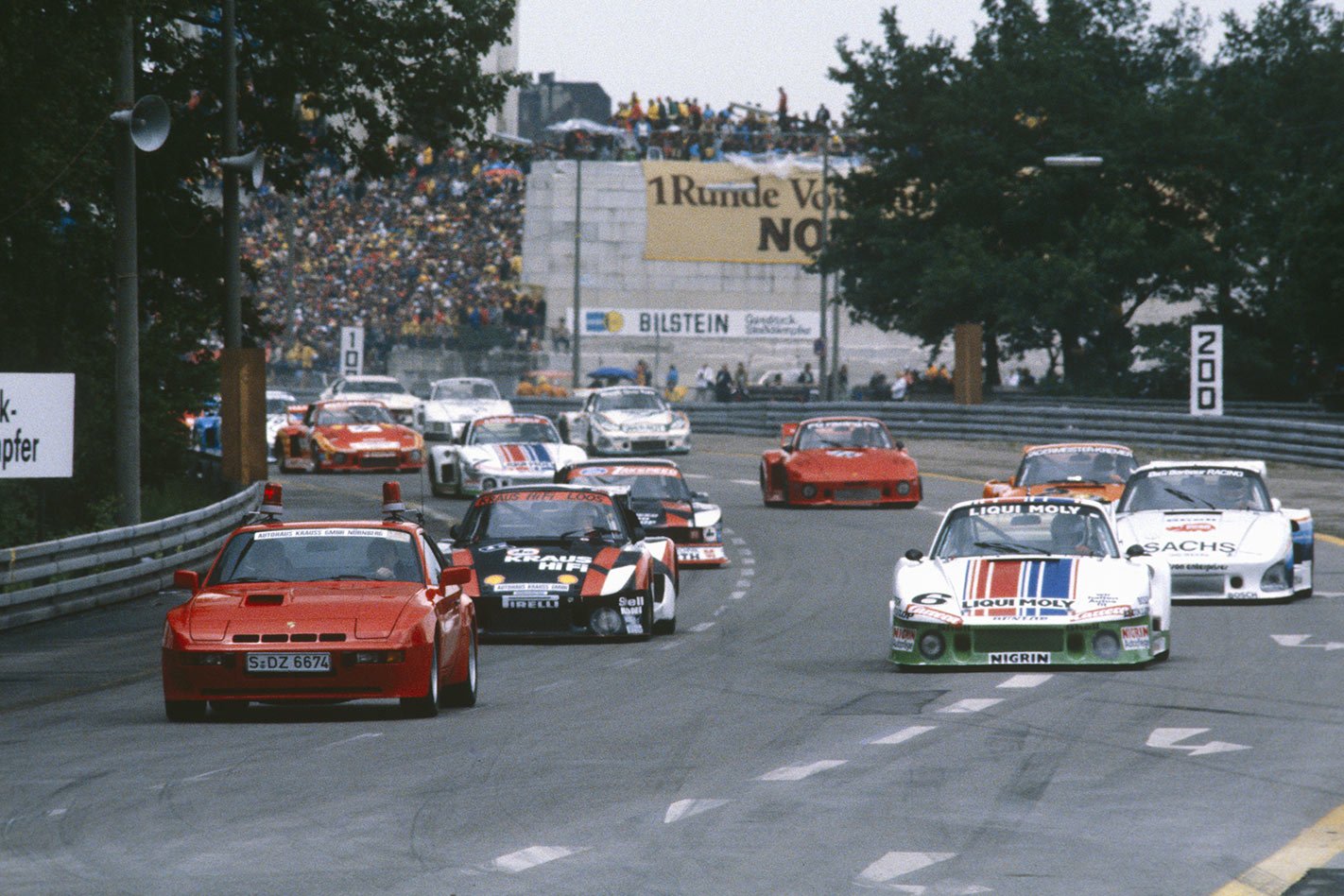
But weight distribution only gets you so far. Racer Tony Dron found the handling required finessing. “With weight at each end and little in the middle, it handled like a dumb-bell,” he said. “A couple of heavy bags of cement, placed in the middle of the car, widened the neutral band of handling hugely; it was much nicer to drive like that, and the lap times at Donington were unchanged because of the inertia of the added weight.”
Competition was key to the credibility of the four-cylinder transaxle cars. The Carrera GT was built with the aim of producing the 400 units required to homologate it for Group 4 racing. Arriving between the 936 and 956 factory racing cars, here was a chance for Porsche to forge a different chapter and legitimise the forthcoming 944 model. A 924 Carrera GTR finished sixth at Le Mans in 1980 which, given it qualified 46th on a grid of 50 cars, was one heck of an achievement. Another Carrera GTR at La Sarthe that year was piloted by Peter Brock, Jim Richards and Colin Bond.
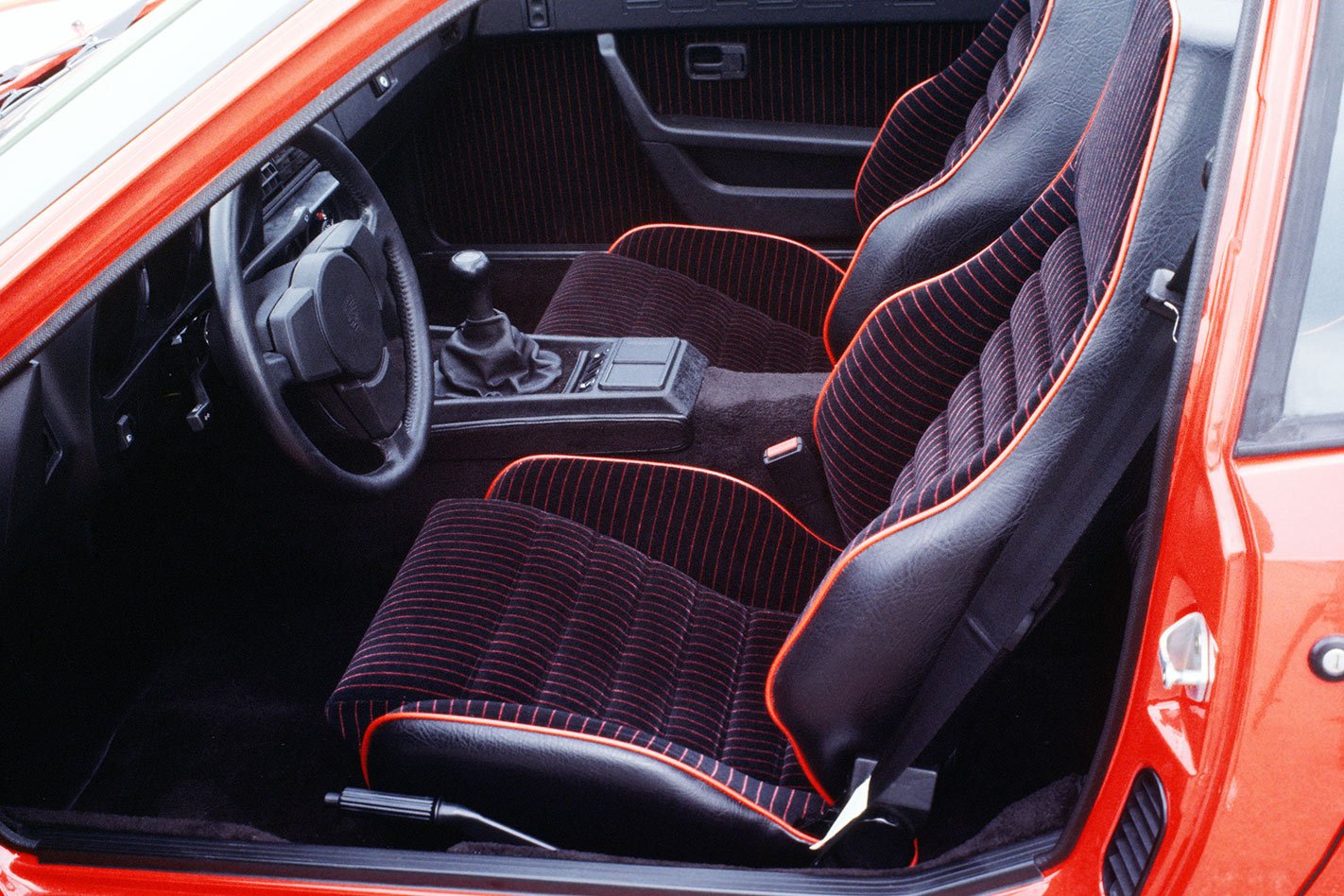
The famously prickly Fuhrmann, vindicated by the direction of the 924/944 development schedule, was elbowed into early retirement at the end of the year, Dr Ferry Porsche being the quiet authority keen to refocus development on the 911. He parachuted in the equally confrontational Peter Schutz in a bid to modernise the flagship. While the Carrera GT’s production run of 406 cars was rapidly over, its position at the head of the 924 hierarchy was replaced by the even rarer GTS, of which 59 were built, and the almost unicorn-like GTR, another homologation special which saw just 17 units leave the Zuffenhausen plant.
Identifying a genuine 924 Carrera GT is relatively easy if you know how to decipher the VIN plate, which should have the letters 93ZBN7 in it. Those numbers are key. Remember that 937 is the Porsche designation for the 924 Carrera GT. By contrast, a 924 Turbo (931) wearing a bodykit will have a ‘1’ after the ‘N’. After that designation, the GT chassis numbers run from 051 to 450. All 924 Carrera GTs will be either black, red or silver.

Other identifiers include thinner rear hatch glass, an 84-litre fuel tank, the intercooler on top of the engine, and those polyurethane wheelarch extensions. Replica panels are made from fibreglass and, unlike the originals, are rigid and won’t deform and rebound when pressed. If these have been replaced, or if other hard-to-source items such as the brake ducts, decals or the original hatch glass are missing, it’s probably a good idea to inspect the vehicle more thoroughly for accident damage.
It’s hard to find a car launched in the 1980s that didn’t end up in the clutches of the Wheels road-test team, but the 924 Carrera GT is one of the few. Only 75 were built in right-hand drive (of which 42 survive today) and of these, 15 were Australian complianced. As values and interest in the Carrera GT grew, many of those slipped back overseas. Today there are but a handful on these shores.
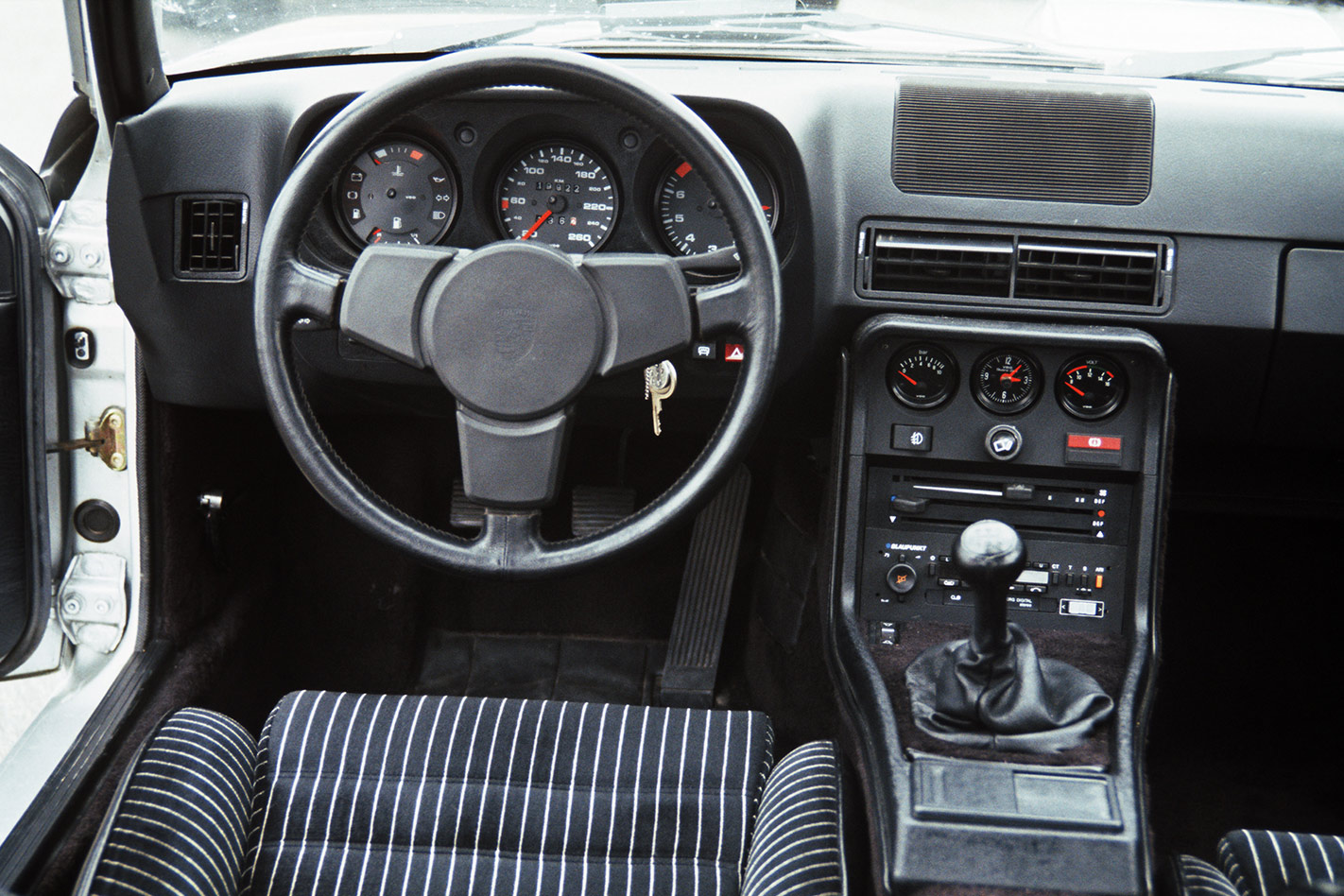
Aussie journalist Steve Cropley did test one for sister title Car magazine, back in 1981. “No more is the Porsche turbo a kind of Rhodes Scholar’s car, needing all the power of an awesome brain to ensure that it is kept always in the right gear and is taken to precisely the right engine speed to ensure a smooth flow of turbo power. The chassis is brilliantly developed and balanced,” he wrote. “The Carrera’s grip on the road, even at semi-suicidal speeds, is akin to that of a barnacle on the bottom of a trawler.”
What the Carrera GT demonstrated was that Porsche’s sporting lineage needn’t be exclusively air-cooled and rear-engined. Today the 911 accounts for around 10 percent of Porsche’s global vehicle sales and the company is working on a more affordable entry-level sports car. It could hardly have a better template for cost-effective success than the achingly desirable 924 Carrera GT.
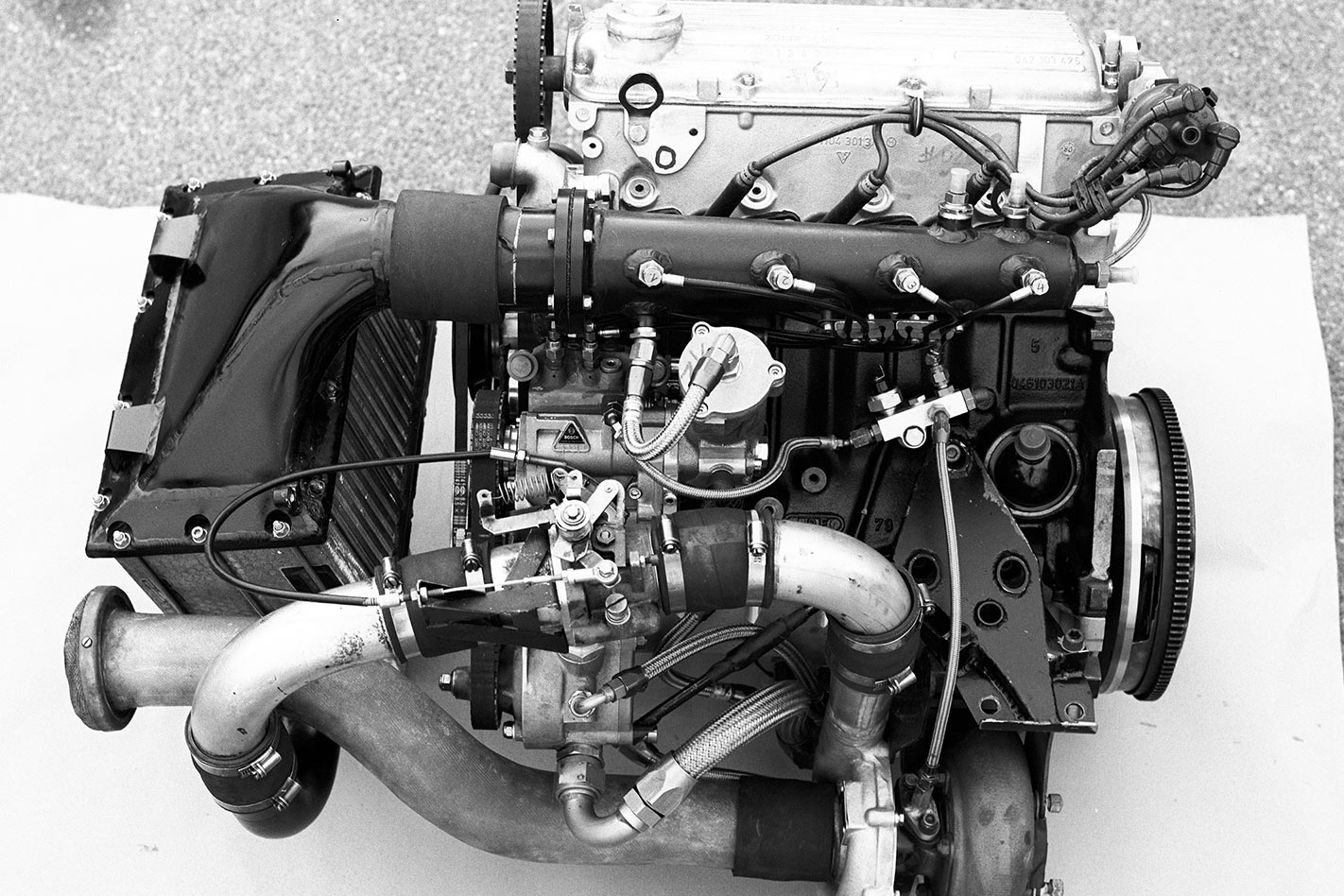
24 HOURS OF LE MANS ON ONE SET OF TYRES
The#87 car of Doc and Jim Busby won its class at Le Mans in 1982 on one set of five BF Goodrich Comp T/A street tyres, the first to do so since the introduction of slicks. The treads were shaved by 50 percent, but it’s still a mighty achievement to cover 3727km at race pace on street rubber.
WHAT IS IT LIKE TO OWN? – RUSSELL STURZAKER, CROYDON, VIC
Of the 15 officially imported 924 Carrera GTs in Australia, Russell’s concours-winning car is the only black one.
“I had it for eight years, and tracked it all the time. I then sold it, but bought it back 15 years ago,” says Russell.
“I was never into the way 911s drove. I tried my dad’s 911E in the ’70s, spun it and nearly put it into the River Yarra.
“What I love about the 924 Carrera GT is that Porsche wanted to show that a front-engined, water-cooled car could be competitive. They walked around the spare parts bins and got all the bits they needed in order to compete at Le Mans.”

PORSCHE 924 CARRERA GT SPECS
Engine: 1984cc 4cyl, sohc, 8v, turbo
Max power: 154kW @ 6000rpm
Max torque: 275Nm @ 3500rpm
Transmission: 5-speed manual
Weight: 1180kg
0-100km/h: 6.9sec
Economy: 9.1L/100km
Price: $185,000 (estimated)
The good: Homologation credibility; aggro styling; appreciating values; fun to drive; solid transmission; significance in Porsche’s history
The bad: Rarity if you’re looking to buy; dip in values in the ’90s means some were neglected; turbocharger can be fragile; low-set steering wheel


